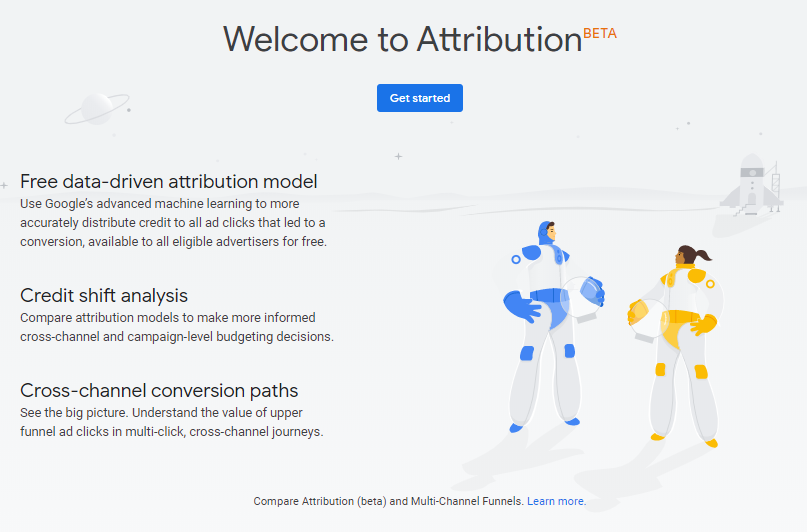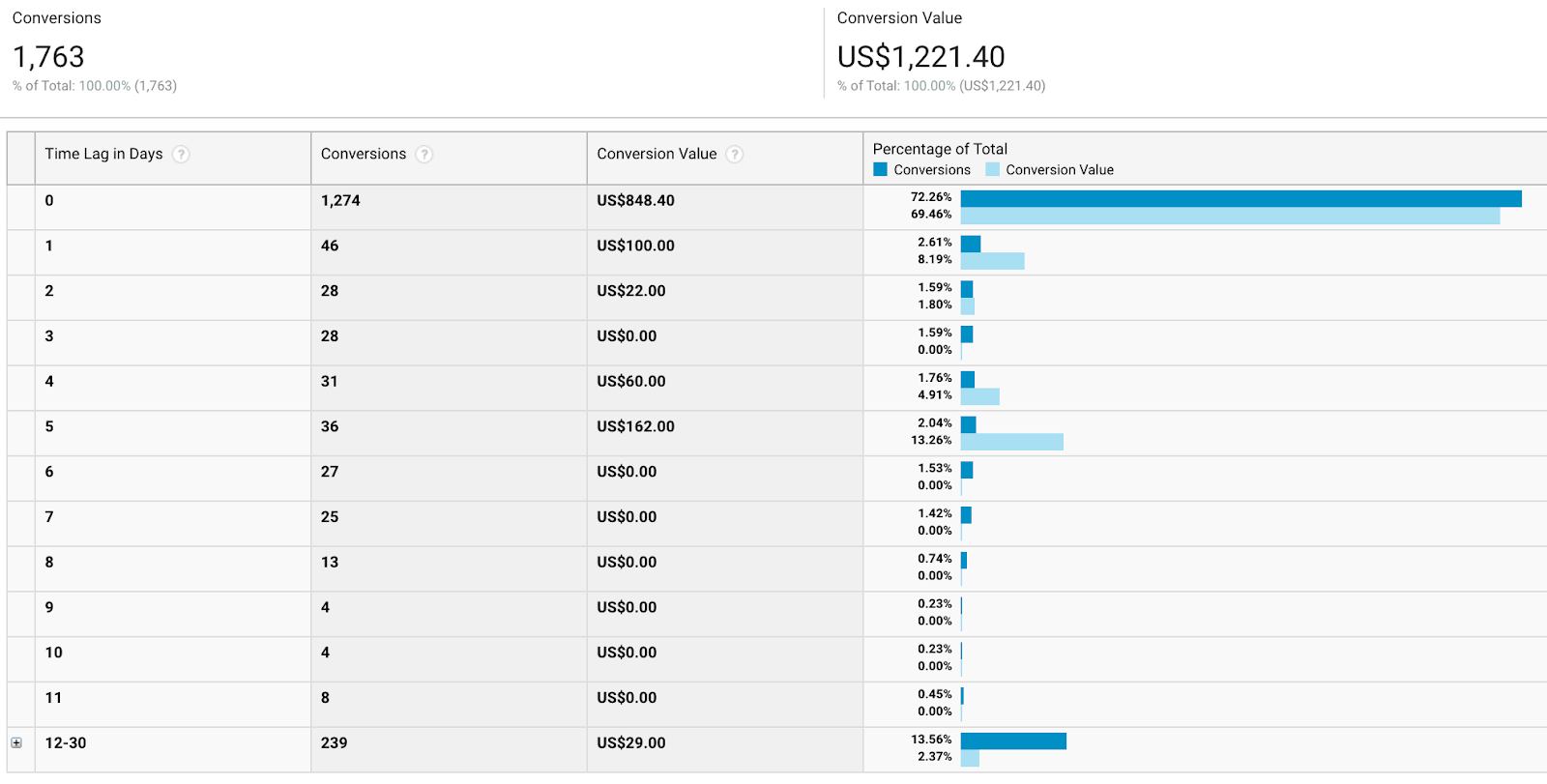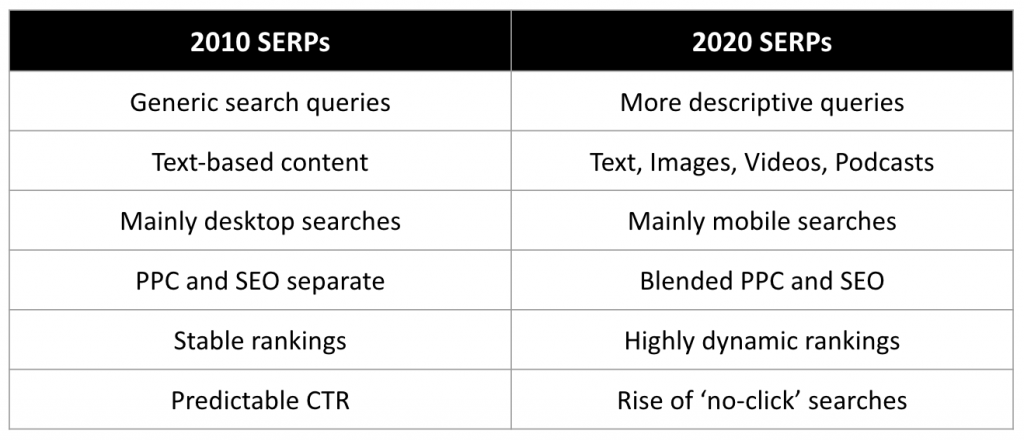Marketing has always been about understanding and shaping behaviors.
To achieve this aim, we must communicate effectively with our audience.
Content is the necessary vehicle for delivering these messages.
It has the power to persuade, entertain, excite, and inform people.
As we gain the capability to attract Google traffic through images, videos, and even podcasts, the potential for content marketing continues to grow.
But how can we know that our content is working?
This is where the logic can fall down.
The CMO Survey 2020, from the American Marketing Association and Deloitte, found that:
- Just 35% of senior marketers can prove the impact of their marketing quantitatively.
- A further 44% say they have a qualitative sense of whether marketing is performing, but cannot prove this quantitatively.
- The remaining 21% still cannot demonstrate the direct impact of their marketing efforts.
Only 20% of consumers engage with B2C content, according to BrightEdge research.
Brands know instinctively that content marketing must be worth investing in.
But there is a palpable disconnect between this qualitative sense that content “works” and the quantitative proof that it is working for them right now.
ADVERTISEMENT
CONTINUE READING BELOW
Without that insight, it is impossible to tap into content marketing’s full breadth of possibilities.
With attention to data and a focus on what really drives customers, attribution can help us illuminate the true value of content towards meaningful business metrics.
The Value of Content to SEO & Beyond
Consumers have the world’s information at their fingertips and typically, they head to a search engine when they have an itch to scratch.
Put simply, without content, there would be no SEO. There would be nothing for us to optimize for the search engines, after all.
The search engine results pages (SERPs) are much more dynamic than ever before, containing a range of multimedia assets.
However, numerous factors made it much simpler to quantify the value of content in the past:
Users would type standardized key phrases. For example, “Thailand holidays” or “buy sneakers online”.
- Searches were mainly carried out on desktop, reducing the potential for hyperlocal results.
- Content was almost exclusively text-based.
- Click-through rates, though the subject of much debate, were relatively stable.
- Paid ads and organic listings took up predictable spaces in the SERPs.
ADVERTISEMENT
CONTINUE READING BELOW
These static and reliable patterns are great for aligning landing pages with keywords, keywords with rankings, and rankings with clicks.
It was then possible to calculate a rough projection of traffic value based on these simple factors.
More importantly, it was possible to look back and see if the content had delivered on those targets.
As a result, marketers could isolate SEO as its own content channel and report on the effectiveness of their new pages.
This sense of certainty was always illusory, and the veil has been lifted by Google’s updates over the last decade.
For example, Google has a much more sophisticated understanding of written language today.
The Hummingbird and BERT updates are just two examples that have progressed this field significantly.
In the SERPs, paid and organic listings increasingly mingle in shared spaces and individual consumers see different results based on their preferences, device, and location.
The old certainties crumble in the process.
Search queries are much more varied since customers get better results if they are more specific.
Why search “Thailand holidays” if you can pin it down to the exact type of holiday you want instead?
Mobile devices provide Google with a range of rich intent signals it can use to personalize the search results, too.

In short, Google can understand its users better and can, therefore, show them better results.
For marketers, the causal chain of events from landing page to rankings to clicks to leads has dissolved.
Rankings are unstable, search volumes are unreliable, the data is unconvincing.
We can deliver a much better experience through personalized, multimedia results – but can we measure the impact?
Shifting Focus – From Rank to Revenue
By focusing on rankings too heavily, marketers missed the true value of content marketing.
This also created a disconnect between marketing and the CFO, by using metrics that had no clear value outside of their original context.
ADVERTISEMENT
CONTINUE READING BELOW
The default, last-click approach to attribution (where the full value of the conversion is awarded to the final referral channel) was often the best we had, and it did at least align sales with a marketing channel.
However, this approach is out of step with the consumer journey.
If we are misreporting the data, the opportunities to improve escape our grasp immediately.
In reality, customers do not make decisions by searching, clicking, and buying, all in one session.
They shop around, they switch devices, they check social media, they talk to their friends.
The customer journey is increasingly fragmented across channels and devices, which leads us further away from the last-click attribution model.
The last click matters, for sure, but we know that the dozens of clicks before that mattered too.
The shift away from this flawed-but-dependable model has led some to the nebulous realms of “awareness” and “engagement” in search of new metrics.
As Simon Bell, professor of marketing at the University of Melbourne, told Deloitte:
ADVERTISEMENT
CONTINUE READING BELOW
“Accurate attribution is the single largest issue we have as marketers … digital metrics were held out as our savior, but instead, they have only led to more confusion.”
There Is Another Way
This is not an inevitable state of affairs.
Major publishers, such as the New York Times and Condé Nast, have built their own attribution models using machine learning.
These companies want to know which articles are most likely to lead free users to upgrade to a paid subscription.
Using a simple, rules-based model, they could easily see which was the last article the user read before signing up.
This would only tell one part of the story, however.
By looking at the user’s full set of interactions and combining this with engagement metrics like time on page and scroll depth, it becomes possible to see which articles have the greatest impact on the defined objective.
These journeys can then be compared with the paths of other users to help isolate the most significant contributing factors to a decision.
ADVERTISEMENT
CONTINUE READING BELOW
This insight is invaluable.
The publishers can learn a huge amount about their audience base, which will help them shape marketing messaging and targeting.
For example, they now know which articles to use in their paid social media or paid search campaigns for different audience segments.
The data can be fed into the editorial and product teams, too.
Moreover, marketing efforts can be measured by their contribution towards this goal, rather than channel-specific metrics such as likes, shares, or rankings.
Defining Content Value with Attribution
There are numerous lessons here, but the most universal principle is that successful attribution models are built around an objective.
As marketers, we are in the business of affecting behaviors.
Without knowing what changes, we wish to create, it is difficult to develop a reliable model for attributing value.
The publishers discussed above have a clear metric (new subscribers), that is important to all departments.
For other companies, this could be a forward-looking metric like Customer Lifetime Value (CLV) instead.
ADVERTISEMENT
CONTINUE READING BELOW
Not every business can, or will even want to, build their own models to answer such questions.
Fortunately, most businesses do not need to go this far.
As Google continues to open up access to its data-driven attribution services, even free Google Analytics users will soon be able to create their own version of the New York Times model referenced above.

As it stands, there is plenty of room to experiment and customize the rules-based models in analytics platforms.
For companies whose customers tend to have a long purchase journey, such as in the automotive sector or luxury watches, marketers may find that early interactions are highly significant.
Getting the consumer’s attention and piquing their interest is what sets off the rest of the interactions.
As such, these brands could apply a position-based, first-click, or linear attribution model.
ADVERTISEMENT
CONTINUE READING BELOW
Position-based would give equal credit to the first and last interactions (40% each) and split the remaining 20% evenly among the intermediary stages.
This would reflect the value of the content that grabbed the consumer’s attention and the final piece of content that closed the sale.
First-click would give 100% of the credit to the first interaction, while the linear option would simply split the credit evenly among all the interactions in the journey.
Marketers can start digging into their data in their analytics platform today to see what the typical customer journey looks like.
The time lag report in Google Analytics (Conversions > Multi-channel Funnels > Time lag) will show the length of time between the first interaction and a conversion.

The top conversion paths tab will show the channels users typically interact with, and in which order.
ADVERTISEMENT
CONTINUE READING BELOW
Meanwhile, the path length report will reveal how many interactions are in a typical purchase journey.
The aim here is not just to take a retrospective look at how customers have engaged with your content, but also to shape future strategy by understanding where content value lies.
Deciding Which Types of Content to Produce
This analysis will help you uncover social media posts, press releases, or YouTube videos that have a bigger impact on conversions than last-click would ever show.
If, for example, marketers note that the early stages of the customer journey are more important than previously thought, they can make the business case for investing in this more heavily in future.
That may mean creating more video content to rank through Google’s universal results or directly on YouTube.
Brands can then track this content performance to see how much it contributes to the company’s business objectives.
They can also look at numerous other ways to monetize their content.
ADVERTISEMENT
CONTINUE READING BELOW
Typically, customer journey models consist of a few stages, such as awareness, interest, decision, and action.
There is then a dotted line between these stages and the assumption that if content in the awareness phase does its job, the customer will move on to the interest phase, and so on.
This can lead to vague “awareness campaigns” that aim for reach, likes, and clicks.
These metrics can serve a purpose, but in isolation, mean very little.
Being aware of something offers no guarantee of taking future action.
This language also separates marketing from senior business leaders, at a time when the two should be working closely.
Instead, begin with the behaviors that you want to shape and work back to pinpoint the key moments that tend to precede that conversion.
If marketers can draw out these potential sequences, then they can create a customer journey that aligns with meaningful metrics.
For example, if a brand sees from their data that customers who view three or more products in their first session are more likely to make a purchase later, they can apply a monetary value to content that drives these interactions.
ADVERTISEMENT
CONTINUE READING BELOW
Just as significantly, they can then report using the new attribution model to show how well the content performed versus expectation and assign value to each piece of content.
In Summary: Attributing Value to Content
The relationship between SEO and content has always been symbiotic, but this closeness has been restrictive too.
Just as there is no one type of content, there is no longer one type of search marketing.
To avail of this, marketers must take a broader perspective on the value their content provides to their audience.
Rather than viewing content performance through the lens of just SEO metrics, it is important to begin from a customer-centric perspective.
The customer may find the content through PPC, social media, or PR channels, all of which have value for the business.
The new, multimedia SERPs also liberate SEOs to experiment with video, image, and audio content.
Many companies create blog posts as a primary form of content marketing, but it is now possible to gain search traffic from a much wider array of sources.
ADVERTISEMENT
CONTINUE READING BELOW
Those who use customer insights to map out and measure the purchase journey will not only be able to create better content but also demonstrate its value to the business.
These are some tips to help get started with this new approach for valuing content:
- Begin with the behaviors you want to encourage in your audience. Without knowing what you want them to do, it is very difficult to persuade people to take action.
- Analyze the customer journey to see which steps tend to have a bigger contribution towards conversions.
- Then, assess attribution models to see which would best reflect your customers’ journey. You can trial data-driven attribution or customize your own rules-based model.
- Create new content to target these key phases in the purchase journey. Look for the path of least resistance in the SERPs: that could mean using paid search to promote content, or using images to rank in Universal Search, for example.
- Report on metrics that matter to the business beyond just ranking for a term. This approach will allow you to show a causal link between interactions that lead to conversion, which can then be communicated to the rest of the company.
Attribution in digital marketing is hard, but it’s also very important.
For content marketers, it is important to have a multitude of metrics aligned around not just on SEO.
Value needs to be attributed to value touches, brand equity and share of voice (SOV), sales, customer service, product, positioning, PR, and more.
And remember, when search works it means content is working.
But its value simply does not end there.
More Resources:
ADVERTISEMENT
CONTINUE READING BELOW
Image Credits
Screenshot taken by author, June 2020
In-Post Images: Google
